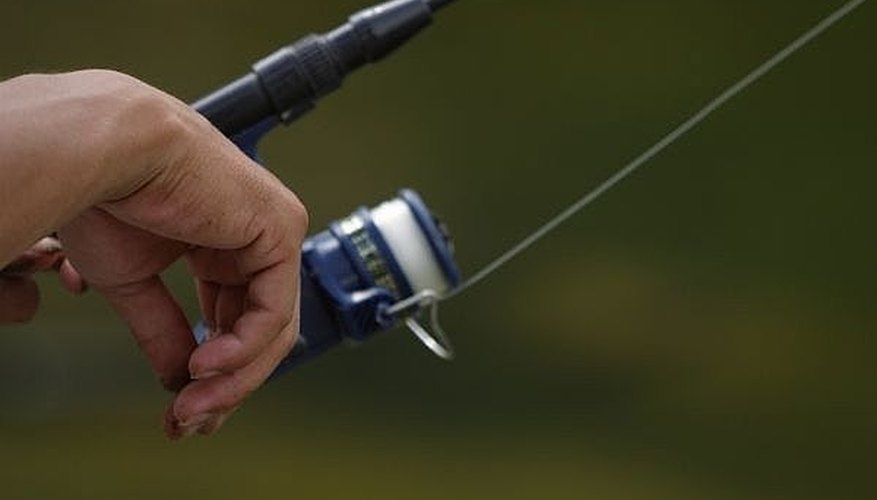
The yarn and corky is a simple rig used to catch steelhead and salmon in river systems. The rig does not require any bait and the combination of a round float, yarn and hook is sufficient for many fishing situations. Add weight to control the depth of the hook and place the yarn near the bottom of the river. The steelhead and salmon are not typically feeding but will feel the yarn with their mouth before releasing it back into the water. The yarn catches the teeth and you must set the hook to catch the fish.
Items you will need
Snelled hook
Yarn
Corky
Toothpick
Split shot weights
Slide the line through the center hole on the corky. Slide the corky up the line, but don't attach it to a permanent position on the line.
Tie the end of the line to a snelled bait hook with a bumper knot. The knot creates a loop that holds the yarn tight to the hook. The knot is also effective for holding salmon roe on the hook. To tie the knot, slide the end of the line through the hook eye and hold it on top of the hook shank. Wrap the line around the hook and the end of the line. Make 15 wraps up the shank and feed the end of the line back through the hook eye to create a loop. Make an additional six wraps over the loop and pull on the free end to tighten the knot.
Place a piece of egg yarn in the loop created by the bumper knot. Pull on the end of the line to tighten the loop. Spread and stroke the yarn with your fingers to cover the hook shank. Cover as much of the hook as possible.
Place three pieces of split shot 6 inches above the yarn. Determine the general depth of the water and use a toothpick to peg the corky in a permanent position on the line.
Cast the yarn and cork upstream and allow it to drift through a pod of salmon or steelhead. Set the hook if the corky dips beneath the surface of the water.
Tips
- Don't peg the corky in a permanent position for waters with variable depth. Bounce the split shot on the bottom of the river and allow the line to slide freely through the center of the corky.
References
Tips
- Don't peg the corky in a permanent position for waters with variable depth. Bounce the split shot on the bottom of the river and allow the line to slide freely through the center of the corky.
Writer Bio
Zach Lazzari is a freelance outdoor writer specializing in hunting, fly fishing and the general outdoors. He guided fly fishing trips for 10 years in Colorado, Alaska, Montana and Patagonia-Chile. Zach lives in Montana and splits time between the river and keyboard.


